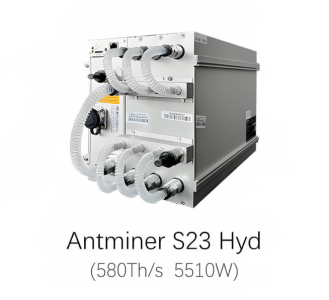Is Bitcoin mining profitable in 2025?

Bitcoin mining has transformed from a hobby for tech enthusiasts into a major, energy-heavy industry. With rising competition, unpredictable Bitcoin prices, and increasing difficulty, many people are asking the same question: Can you still make money mining Bitcoin?
The short answer is: It depends.
Large, industrial-scale mining operations are often still profitable. For individual or small-scale miners, however, it's a significant challenge. But it's not impossible! Success now depends on a deep understanding of several key factors.
What is Bitcoin Mining?
Before we analyze profitability, let's quickly review what Bitcoin mining is.
The Purpose: Mining is the process of verifying new Bitcoin transactions and adding them to the public ledger, known as the blockchain.
How It Works: Miners use specialized computers (called ASICs) to solve complex mathematical puzzles. The first miner to solve the puzzle gets to add a new "block" to the blockchain.
The Reward: For their work, the winning miner receives two types of payment:
A Block Reward: Currently 6.25 BTC per block (Note: This was halved from 12.5 BTC in 2020 and is expected to halve again to 3.125 BTC in 2024).
Transaction Fees: Fees paid by users to have their transactions included in the block.
Key Factors Affecting Bitcoin Mining Profitability
1. Hash Rate
Your mining rig’s hash rate (measured in terahashes per second, or TH/s) determines how quickly it can solve puzzles. The higher the hash rate, the better your odds of earning Bitcoin.
- Good:A mid-range ASIC miner might offer 100 TH/s.
- Great:Top-tier models (like the Bitmain Antminer S21 XP) boast 270 TH/s+.
But beware—higher hash rates mean more electricity consumption, which brings us to the next big factor.
2. Electricity Costs
Mining equipment consumes massive amounts of electricity. If your power costs are too high, it can completely erase your profits.
Ideal Rate: $0.05 per kWh or lower. This is common in countries with subsidized power or cheap natural resources, such as China, Russia, and Iceland.
Profit Killer: Rates above $0.12 per kWh will likely make mining unprofitable.
Pro Tip: To reduce costs, some miners set up operations in regions with access to cheap hydroelectric or geothermal power.
3. Bitcoin Price
The profitability of mining is directly tied to the price of Bitcoin.
Bull Market (e.g., BTC at $70,000): High Bitcoin prices make mining extremely profitable.
Bear Market (e.g., BTC at $40,000): When the price crashes, profit margins disappear, and many miners are forced to shut down their operations.
4. Mining Difficulty
The Bitcoin network automatically adjusts its "mining difficulty" every 2,016 blocks (approximately every two weeks) to ensure a consistent block time.
More Miners Join: The difficulty increases, making it harder to mine new coins.
Miners Leave: The difficulty decreases, making it slightly easier (though this is rare).
Outlook for 2025: Mining difficulty is expected to keep climbing. To stay competitive, you will need to continuously invest in more powerful and efficient hardware.
5. Hardware Costs
The initial cost for equipment is a major factor.
Cost: A high-end ASIC miner (the industry standard) can cost between $5,000 and $10,000.
Obsolescence: Technology advances rapidly. Your mining rig could become obsolete and unprofitable within 2 to 3 years, requiring another significant investment.
Related Article: Top 10 Most Profitable Bitcoin Miners in 2025
Is Bitcoin Mining Still Profitable?
Let’s crunch some numbers. Suppose you’re using a Bitmain Antminer S23 HYD (580 TH/s) with these stats:
- Hash Rate: 580 TH/s
- Power Consumption:5,510W
- Electricity Cost: $0.07 per kWh
- Mining Pool Fee:4%
- Monthly Profit Estimate:$640
- Earnings: ~0.00074902BTC ($33)
- Electricity Cost:2kWh/day
- Net Profit/Loss: -$76(Loss!)

Key Challenges & Profit Strategies for 2025
Bitcoin mining is evolving rapidly. To succeed in 2025, you'll need to navigate new challenges and adopt smart strategies. Here’s a clear breakdown of what to expect and how to maximize your profits.
3 Major Challenges Facing Miners in 2025
1. High Energy Use & Environmental Impact
The Problem: The Bitcoin network uses more electricity than some entire countries. This is drawing significant criticism and pressure to become more environmentally friendly.
The Takeaway: Miners must find ways to reduce their carbon footprint to avoid backlash and ensure long-term viability.
2. Increasing Government Regulations
The Problem: Some major countries have already banned mining, while others are imposing heavy taxes and strict rules.
The Takeaway: Always research the legal and tax landscape in your region before investing in any mining operation.
3. The "Halving" Profit Squeeze
The Problem: The April 2024 Bitcoin halving cut the block reward for miners from 6.25 BTC to 3.125 BTC.
The Takeaway: While this can drive the price of Bitcoin up long-term, miners immediately earn less for the same work, squeezing profits.
How to Maximize Your Mining Profits in 2025
| Strategy | Why It Works |
|---|---|
| ✅ Join a Mining Pool | Solo mining is nearly impossible. Pools (like F2Pool or Antpool) combine power for consistent, smaller payouts (minus a small fee). |
| ✅ Use Renewable Energy | Solar, wind, or hydro power can drastically cut your largest cost—electricity—making your operation sustainable and cheaper to run. |
| ✅ Upgrade to Efficient Hardware | Older gear becomes obsolete. Newer ASIC models (like the Bitmain S21 Pro or Whatsminer M63S) offer much better efficiency, which is crucial after the halving. |
| ✅ Mine Alternative Coins | If Bitcoin isn't profitable, you can mine other coins like Bitcoin Cash (BCH) that use the same algorithm but may offer better short-term returns. |
| ✅ Sell Your Excess Heat | Your mining rigs generate a lot of heat. This can be sold or used for practical purposes like heating homes or greenhouses, turning a cost into revenue. |
FAQs
Can I mine Bitcoin with a GPU?
No. GPUs are no longer competitive for Bitcoin mining. You need a specialized ASIC miner to have any chance of earning rewards.
How much can I earn per month?
Earnings vary widely. With a high-end ASIC and very cheap electricity, you might earn between $100 to $500 per month before accounting for costs.
Is cloud mining worth it?
It's very risky. Many cloud mining services are scams. If an offer seems too good to be true, it almost always is.
Will Bitcoin mining ever end?
It's unlikely to die completely, but it is becoming more centralized. Large, industrial mining farms now dominate, making it harder for small-scale miners to compete.
Conclusion
For Large-Scale Miners: Yes, absolutely. Industrial operations with access to cheap electricity and the latest hardware continue to be highly profitable.
For Small-Scale / Home Miners: It's challenging, but possible. Success depends on carefully optimizing your costs, joining a reliable mining pool, and constantly staying informed about the latest technology and strategies.

